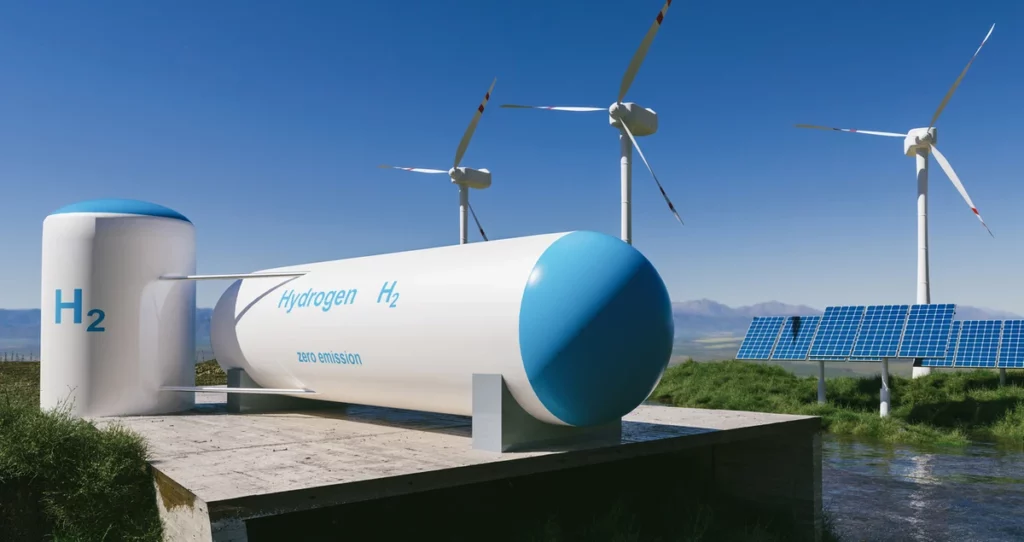Green hydrogen could create up to 3.7 million jobs, add USD 120 billion to the continent’s GDP.
Green hydrogen represents an incredible opportunity for Africa and the continent could capture as much as 10% of the global green hydrogen market, creating up to 3.7 million jobs and adding as much as USD120 billion to the continent’s gross domestic product (GDP), according to a landmark report issued jointly by Masdar and its Abu Dhabi Sustainability Week (ADSW) platform on the sidelines of the 2022 United Nations Climate Change Conference (COP27).
Africa’s plentiful solar and wind resources could be leveraged to produce 30 to 60 million tons per annum (mtpa) of green hydrogen by 2050, about 5% to 10% of global demand. The report, entitled ‘Africa’s Green Energy Revolution: Hydrogen’s role in unlocking Africa’s untapped renewables’, was produced with analytical support from McKinsey & Company.
A blueprint for Africa
Masdar CEO Mohamed Jameel Al Ramahi said the report provides a blueprint for African nations to deliver sustainable, low-carbon growth while extending energy access across the continent. Green hydrogen has the potential to reduce emissions, unlock economic opportunities and create new and valuable jobs for countries across the Middle East and North Africa region.
Green hydrogen: Vast potential
Masdar has long recognized green hydrogen’s potential, with investments as far back as 2008. With several green hydrogen projects underway today around the world – including a number in Africa – “we look forward to continuing to work closely with our African partners to maximize the many achievable benefits of green hydrogen highlighted in this report,” said Al Ramahi.
Africa could be among the most competitive sources for green hydrogen in the world, the report reveals, with a cost of USD1.8 to 2.6 per kilogram in 2030, further decreasing to about USD1.2 to 1.6 per kg by 2050 as hydrogen production technology matures and renewable energy costs continue to decline.
Proximity to demand centers in Europe and Asia also optimally positions the continent to build an export-oriented hydrogen sector, the report suggests, noting African energy exports via green hydrogen and derivatives would reach 20 to 40 mtpa by 2050.
The remaining 10 to 20 mtpa would serve domestic demand, boosting electrification of African communities and delivering other socioeconomic benefits, including a more sustainable energy grid, expanded clean energy access and reduced reliance on fossil fuel imports.
Building a robust global export center
Masdar Director of Asset Management and Technical Services Mohammad Abdelqader El Ramahi said scaling up is an opportunity to not only build a robust global-export sector on the African continent, but also to accelerate the deployment of renewable energy overall.
The grid-connected renewables used for green hydrogen production can feed energy into the grid to provide affordable clean energy to under-resourced areas – notably, in Sub-Saharan Africa, which has an average electrification rate of only 48%.
Enabling production on the scale of 30 to 60 mtpa would require between 1,500 and 3,000 terawatt hours (TWh) of renewable energy, equivalent to more than 50 times Africa’s current total production from solar and wind, the report states.
The largest share of the investments (USD 320 to USD 610 billion) would go to the renewables needed to produce the hydrogen, followed by electrolysis plants (USD 115 to USD 220 billion). For export projects, most of the needed capital is expected to come from foreign investors, according to the report.
Areas of action
Beyond investments, the report recommends six broad areas for action: Development of an integrated master plan; governance, international coordination and mobilization; establishment of regulatory frameworks for hydrogen exports; investments in infrastructure; sourcing and building a highly skilled workforce; and deployment of project de-risking mechanisms.
Masdar, a leading global clean energy company, is actively involved in a number of projects related to green hydrogen production. In April, Masdar and Egypt’s Hassan Allam Utilities signed agreements with leading Egyptian state-backed organizations to cooperate on the development of green hydrogen production plants in the country, targeting an electrolyzer capacity of 4 GW by 2030 and an output of up to 480,000 tons of green hydrogen per year.
Developers have earmarked USD 42 billion for the creation of green hydrogen projects in Egypt.

1 Comment
Pingback: Green hydrogen - Inaugural South African summit is held